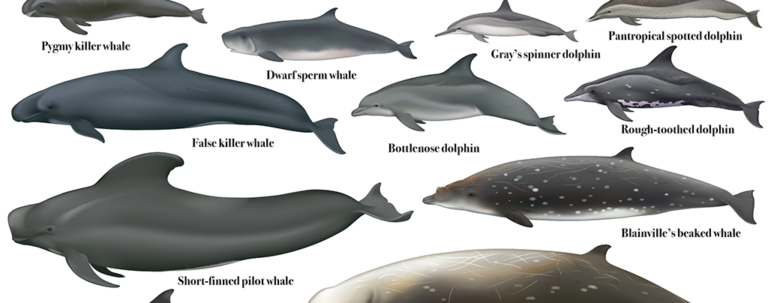Introduction
Whales are some of the most majestic creatures on Earth. From the enormous blue whale to the agile orca, each species has unique characteristics that fascinate scientists and marine enthusiasts alike. This comprehensive guide covers 15 types of whale names focusing on their names, scientific classifications, and key details. Whether you’re a marine biologist, whale watcher, or just curious, this article will provide valuable insights into these incredible marine mammals.
Blue Whale: Balaenoptera Musculus

The blue whale is the largest animal on the planet, weighing up to 200 tons and reaching lengths of 100 feet.
Fin Whale: Balaenoptera Physalus
The fin whale is the second-largest whale species, reaching lengths of 80 feet. Fin whales have a distinctive ridge along their back behind the dorsal fin, setting them apart from other species.
Sei Whale: Balaenoptera Borealis
Sei whales are slender and can reach lengths of 60 feet. They are among the fastest baleen whales, capable of swimming up to 31 miles per hour. Sei whales feed on small fish, squid, and plankton, filtering food through their baleen plates.
Humpback Whale: Megaptera Novaeangliae

Humpback whales are known for their acrobatic breaches and complex songs. These whales can grow up to 50 feet long and are easily recognizable by their long pectoral fins and knobby head.
North Atlantic Right Whale: Eubalaena Glacialis
The North Atlantic right whale is critically endangered, with only around 400 individuals left. They are slow swimmers and were historically hunted, making them “the right whale” to target. These whales are identifiable by their callosities, rough patches of skin on their heads.
Southern Right Whale: Eubalaena Australis
Southern right whales are found in the Southern Hemisphere, often spotted off the coasts of Argentina, South Africa, and Australia. They have large heads and no dorsal fin. Their gentle nature and close proximity to shore make them a popular attraction for whale watchers.
Omura’s Whale: Balaenoptera Omurai
Omura’s whale is a relatively new species, only identified as distinct in the early 2000s. Omura’s whales are elusive, making them difficult to study.
Gray Whale: Eschrichtius Robustus
These medium-sized whales have a mottled gray appearance and feed by scooping up sediments from the ocean floor to filter out small crustaceans.
Common Minke Whale: Balaenoptera Acutorostrata
The common minke whale is the smallest of the rorquals, growing up to 35 feet in length. Minke whales are curious and often approach boats, making them a frequent sight in whale-watching hotspots.
Sperm Whale: Physeter Macrocephalus
The sperm whale is the largest of the toothed whales, famous for its massive square head. Sperm whales can dive over 3,000 feet in search of squid, their primary prey. They have the largest brain of any animal on Earth and are highly social, living in matriarchal pods.
Orca: Orcinus Orca
Orcas, also known as killer whales, are one of the most well-known cetaceans due to their striking black and white appearance. Despite their nickname, orcas are actually the largest species of dolphin. They are apex predators, hunting seals, fish, and even other whales in highly coordinated pods.
Beluga Whale: Delphinapterus Leucas
These small, white whales are native to Arctic and sub-Arctic regions. Belugas have a flexible neck, allowing them to turn their heads, which is uncommon among whale names.
Bottlenose Dolphin: Tursiops Truncatus
Bottlenose dolphins are highly intelligent and social, often seen interacting with humans in the wild and in captivity. They have a streamlined body and a distinctive curved dorsal fin.
Pygmy Sperm Whale: Kogia Breviceps
The pygmy sperm whale is one of the smallest whale species, rarely exceeding 11 feet in length. Pygmy sperm whales have a unique defense mechanism: they can eject a cloud of dark, ink-like fluid to escape predators.
Conclusion
Whales are extraordinary creatures that play a vital role in marine ecosystems. Each species has distinct characteristics that make them unique, from the immense blue whale to the mysterious pygmy sperm whale names. Understanding these different types of whales enriches our appreciation for marine life and underscores the importance of conservation efforts.
